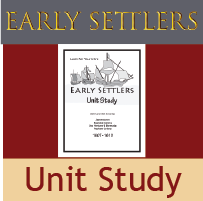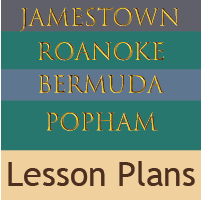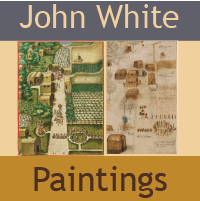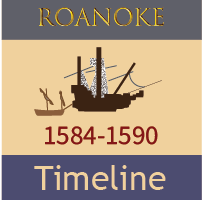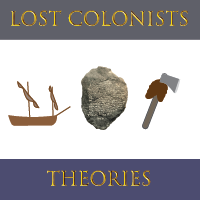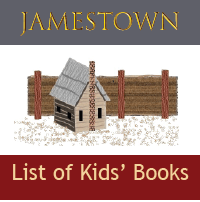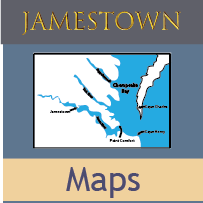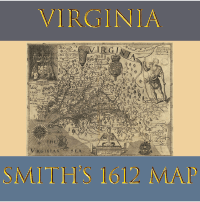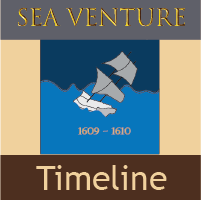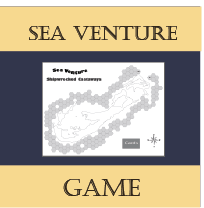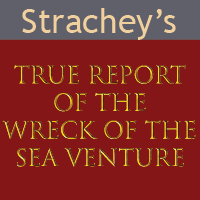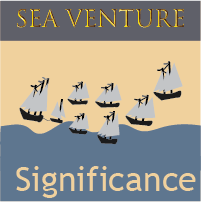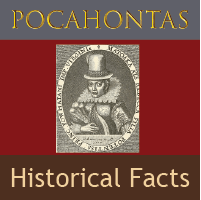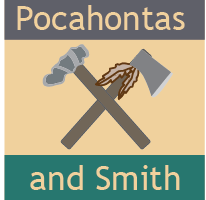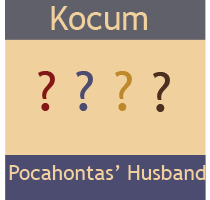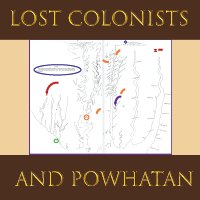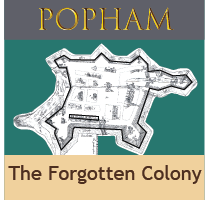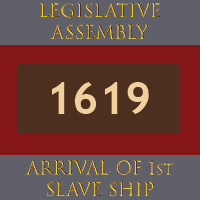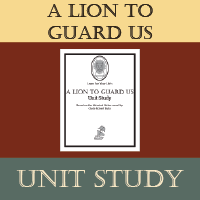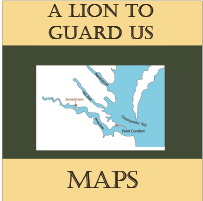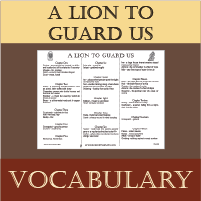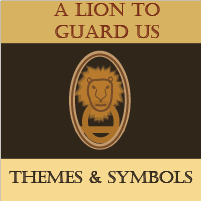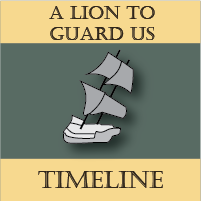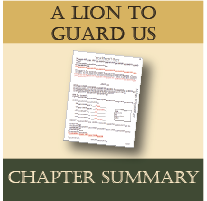Who Was Kocoum
There is a single historical reference to Kocoum as the husband of Pocahontas. Who was Kocoum and what do we know about him?
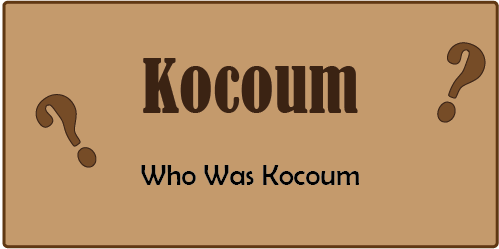
Only Reference to Kocoum before 1900s
Historie of Travaile into Virginia Britannia
William Strachey - written 1612 to 1619; published 1849
I say they often reported unto us that Powhatan had then living 20 sons and 20 daughters beside a young one by Winganuske, Machumps his sister and a great darling of the king's, and besides young Pocohunta, a daughter of his using sometimes to our fort in times past, now married to a private captain called Kocoum some two years since.
This is the only written 16th century reference to Kocoum; and in fact there are no references to him until Strachey's account was published in 1849. (His account and John Smith's were similiar and Smith's was the more recognized name.)Who Was Strachey?
Strachey's identity is helpful in analyzing this reference (though it isn't going to answer all the questions that arise from that sentence.)William Strachey was a gentlemen writer and contemporary of the famed Wm. Shakespeare whose fortune had not quite caught up to Shakespeare's. In fact, he was a bit hard on his luck. To improve his lot, he bought himself a passage to Jamestown for the Third Supply in 1609 onboard the ill-fated Sea Venture. Luck not being one of his stronger points, he was shipwrecked with the rest of the crew and passengers and admiral and governor on Bermuda Islands for ten months. True to his calling, he wrote about the storm and shipwreck, as well as the extreme dramatic life on Bermuda. Modern version of his Strachey's true report can be read here.
Of interest to us, is a little footnote in his history. Prior to leaving England, he met with two of the natives who had been sent there in a "friendly hostage exchange." These were Namontack, son of Powhatan, and Machumps - a sister of one of Powhatan's wives per the statement above. Strachey was writing a Dictionary of the Powhatan Language and Namontack and Machumps were his sources. Both Namontack and Machumps were aboard the flagship Sea Venture of the Third Supply in 1609, and both were shipwrecked on the Bermudas with Strachey. Only Machumps, however, arrived in Jamestown. Namontack disappeared, and though they suspected Machumps murdered him, it was never proven. That might be an indication that Machumps was an intimidating character, but that is reading extra info into the written the record.
Amongst the many other events on that island, two babies were born, and both William Strachey and Captain Christopher Newport were named god-parents of both infants. Other than mentioning it, he doesn't make much of that fact, but it is - perhaps - a quiet testimony to the character of both men.
Of interest to us, is the fact that the first of those babies was Bermuda Rolfe, daughter of John Rolfe and his first wife whose name Strachey unfortunately didn't bother to record. (Not such a good thing, really. No one else knows her name either.) Mrs. Rolfe and Baby Bermuda died within the year. Rolfe, like Strachey, was a man destined to know hard times.
Strachey, Rolfe, and the rest of the castaways built two ships and managed to make their way to Jamestown to the amazement of the colony that had given them up for dead. For once, perhaps, luck was with Strachey because he and his fellow travelers had missed the horrors we now refer to as the Starving Time and were, in fact, instrumental in saving the lives of the unfortunate ones stranded there. Read about the impact of the Sea Venture survivors.
Arriving in May 1610, Strachey took up his pen again and became the secretary of Jamestown, an official position he desired. For some reason, he left his post in September 2011 to return to England. There he published his work as Jamestown secretary, For the Colony In Virginia Britania: Laws Divine, Moral and Martial. This title indicates how heartily he approved of Thomas Dale's stern martial laws. After this book was published in 1612, he turned his attention to his next and biggest project - the work that would finally (he hoped) bring him his long-alluded success. The Historie of Travaile into Virginia Britannia: The 1st Book of the 1st Decade was his most indepth work. Unfortunately for Strachey, his work was by-passed for John Smith's General Historie of Virginia. Strachey's manuscript was destined to sit untouched for 230 years. Meanwhile, his much more lively work The True Reportory of the Wrack and Redemption was circulated in London, apparently widely, but without financial benefit to Strachey. It was actually published in 1625, after his death. Finally, in 1849 his handwritten copy of the The Historie of Travaile into Virginia Britania was deciphered and put into print form. For the first time, people learned of the "the private captain called Kocoum."
Two Theories About the Identity of Kocoum
Before Strachey's The Historie of Travaile into Virginia Britannia was published in 1849, there is no written record of Kocoum. So who was he?Two major theories exist about the identity of Kocoum:
- Pocahontas was married to a native named Kocoum before her marriage to Rolfe.
- John Rolfe was Kocoum.
#1 Kocoum was a Powhatan Warrior
Kocoum is believed to be a warrior that had married Pocahontas prior to the time she was taken hostage by the English in April 1613. If so, she would have had to marry him in 1611 or earlier to be married for two years since Strachey wrote, "a daughter of his using sometimes to our fort in times past, now married to a private captain called Kocoum some two years since".Her date of birth is estimated between 1595 to 1598. This is based on reports of her being about ten to thirteen years estimate by Smith in his 1608 report and 1624 report. (Basically, he was guessing her age. We get the idea she was a youngster who wasn't a toddler, nor a young woman. Since she was running around naked, she was pre-pubescent. It's the best we can do for dates.)
Hence, if she married a native named Kocoum in 1611, she would have been 13 to 16 years of age, which is quite possible.
So if this theory is correct, Kocoum was either dead at the time of Pocahontas' marriage to Rolfe and they both were widowed, or she was divorced, possibly because of her capture or for some other reason.
Divorce and remarriage was highly taboo among the British at the time, and considering the strong religious convictions of Rolfe, it is highly unlikely he would knowingly marry a divorced woman. We also have Rolfe's letter to Thomas Dale seeking permission to marry her, at which times he does mental gymnastics trying to legally and theologically justify his marriage to a native. (Published in True Discourse by Ralph Homor, 1615 - below. Note that this letter was published about as quickly after the marriage as was possible considering a slow ship had to carry hand-written documents to England.)
Rolfe's writing does not quite make sense if he knew Pocahontas to be a divorced woman. Of course, there is the possibility that Pocahontas was previously married and John Rolfe was unaware of it.
Is it possible that William Strachey would know about her marriage and not John Rolfe?
It's not out of the question. Strachey knew Machumps in England before he met Rolfe onboard the Sea Venture. Once Machumps returned to Virginia he could easily have visited Strachey in Jamestown. And Machumps was the sister of one of Powhatan's wives - an inside connection since Pocahontas was a daughter of the king. So Perhaps Strachey knew something Rolfe didn't.
It should also be noted that Linwood Custalow has published an account on the life of Pocahontas from oral tradition of the Mattaponi tribe that states she was married to a warrior named Kocoum.
Objections to Kocoum as a Native
There are some objections to this theory.Time Line
If Strachey has inside information from Machumps, and he last saw Machumps before he left for England in September 1611, that would mean Pocahontas was married to a native named Kocoum in September 1609, right before John Smith left for England, when she was between 10 and 14. It is unlikely Smith would not have known about the marriage and reported it in his own history (which was published instead of Stracheys).Oral Tradition
While Custalow's account validates Kocoum as a native, it was drawn from oral history. One problem with oral traditions is that outside influences (like Strachey's account) influences the tradition without leaving documentation. Indeed, it has been noted that Custalow's account largely mimics the written document point by point.Private Captain
Another objection is the terminology used by Strachey: "married to a private captain." Native warriors were not called captains; nor did they have public and private officials in the same sense that the English did.While all of these objections are valid, none can prove conclusively that Kocoum was not a native that Pocahontas married prior to becoming a hostage in 1613.
#2 Kocoum was John Rolfe
The second theory is that Kocoum was actually John Rolfe.The primary support of this theory is the terminology Strachey uses for Pocahontas' husband: "private captain."
While the term captain was originally a military term - the captain of a company of soldiers - it's meaning had spread to mean the head of something. The head of a ship is a captain, whether it is a private or military vessel. Today the captain of a sport's team is certainly not military. And when Lord De La War became governor of Jamestown, he appointed captains of the different forts and agricultural grounds that he established or expanded away from Jamestown. John Rolfe, we know, succeeded in establishing the first successful marketable product which was tobacco. He was captain of a private enterprise, but still under the control of the governor and Virginia Company.
Rolfe and Pocahontas went to England on a company sponsored tour, and he returned after her death. He wrote a few months later in June 1617 to Edwin Sandys, member of Parliament and the treasurer of the Virginia Company, asking him to "remember me for some place of command and some estate of land to be confirmed to me and my child, wherein I have formerly found your love and readiness." In other words, "I want to be the captain of a private command again as I was for you before we left Virginia."
Timing also seems to favor the theory of Kocoum-as-Rolfe. Strachey wrote the Virginia history after he published his 1612 Laws Moral and Divine from late 1612/early 1613 until about 1618 or 1619. If the quote above was penned in 1616 before Pocahontas and Smith's visit to London then the two of them had been married about two years.
Objections to Kocoum as a Rolfe
Kocoum definitely does not sound like an English name. While it is possible he had such a nick-name and possible that Strachey would know his nick-name because of their close association in the Bermudas and Jamestown, it seems strange that he would write, "now married to a private captain called Kocoum some two years since" without identifying his full name.Conclusion, or Lack Thereof
At this time, that is all the documentation we have of Pocahontas' husband named Kocoum - Disney cartoons and undocumented oral traditions withstanding.Both theories have some support but neither knocks the other theory out of the running, at least in my assessment. But for the time being, this is what we have. It is interesting that information about Jamestown and Roanoke - even at this far off date - still is trickling in.
The Zuniga Map of 1608 found in late 1800s, the publication of Strachey in 1849, the account by Spelman that surfaced, the original watercolor maps of John White, even the finding of Jamestown Fort less than twenty years ago. Perhaps something else will turn up.
Until then...well...I suggest if someone over in England wanted to help us out they might have another look at Strachey's handwritten manuscript. If you have ever read the hand-written notes from the 1600's, you will know what I mean.
References
Strachey, William. The Historie of Travaile into Virginia Britannia: The 1st Book of the 1st Decade (1618)https://archive.org/details/historietravail00majogoog
Rolfe, John. Letter to Sandy's June 1617
https://researchworks.oclc.org/archivegrid/collection/data/647988298
Get the Early Settlers Unit Study
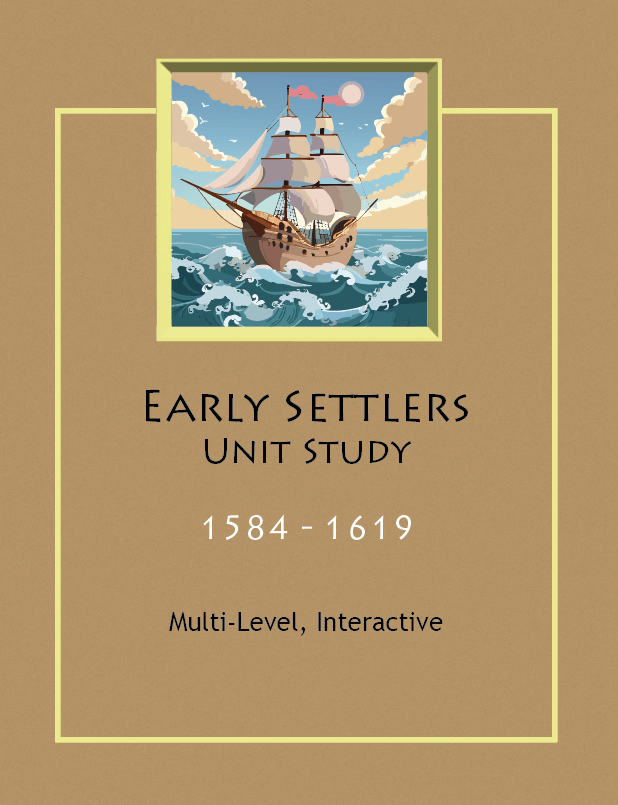
Available in Paperback OR Printable Download
199 pages (Includes Student Pages, Teacher Key, Schedule, Maps, Activities, and More)
Print It Now
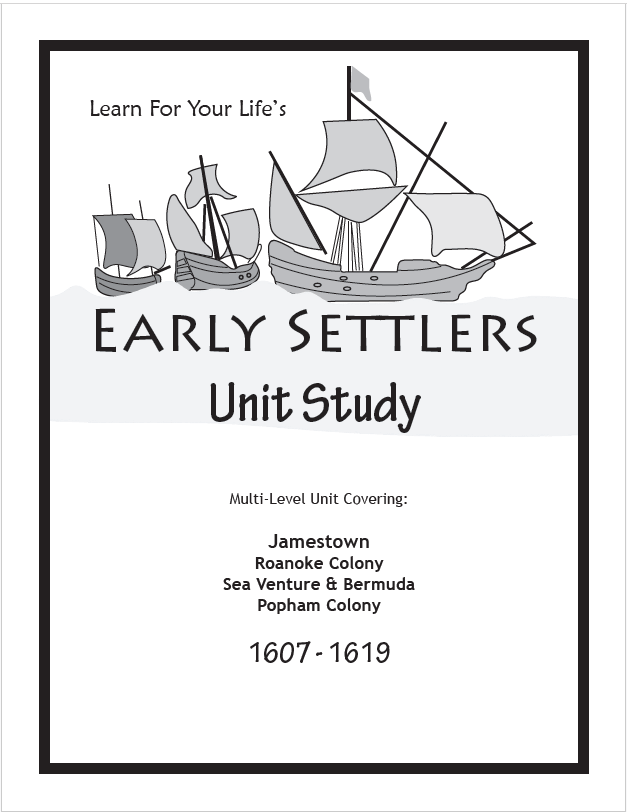
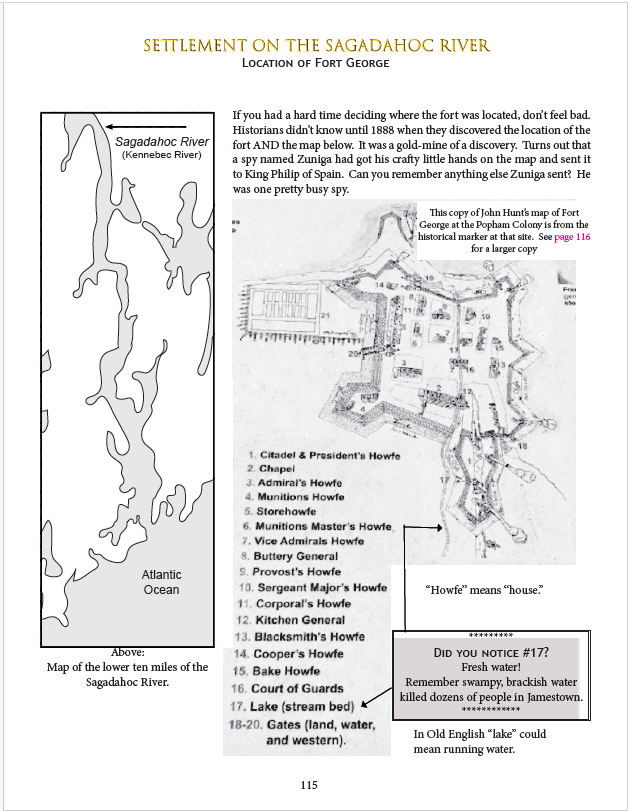
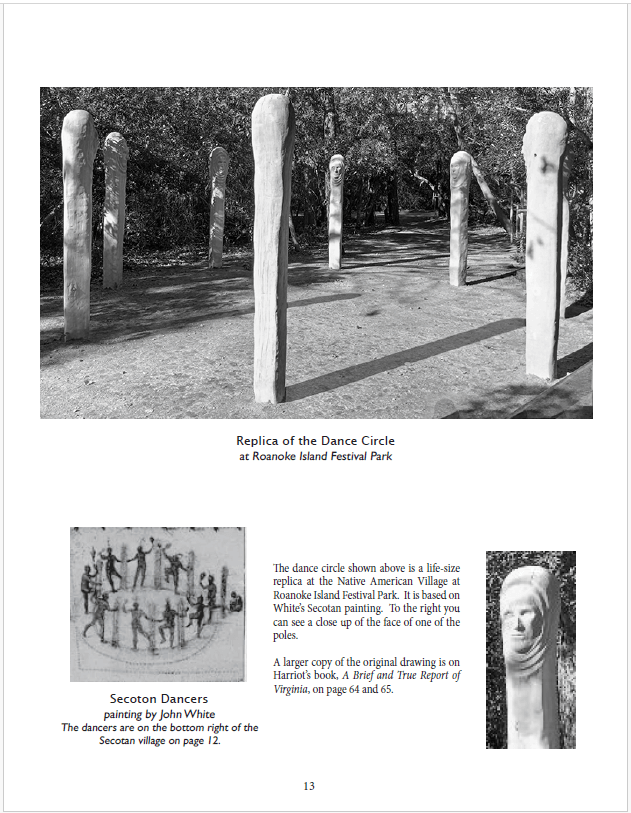
Student and Teacher's Material Included
$5.99 Download - 199 pages
![]()
Softcover Edition - Mailed to You
The same pages are in the softcover book and the printable file. Bound copy is great for repeat use or co-op leaders.
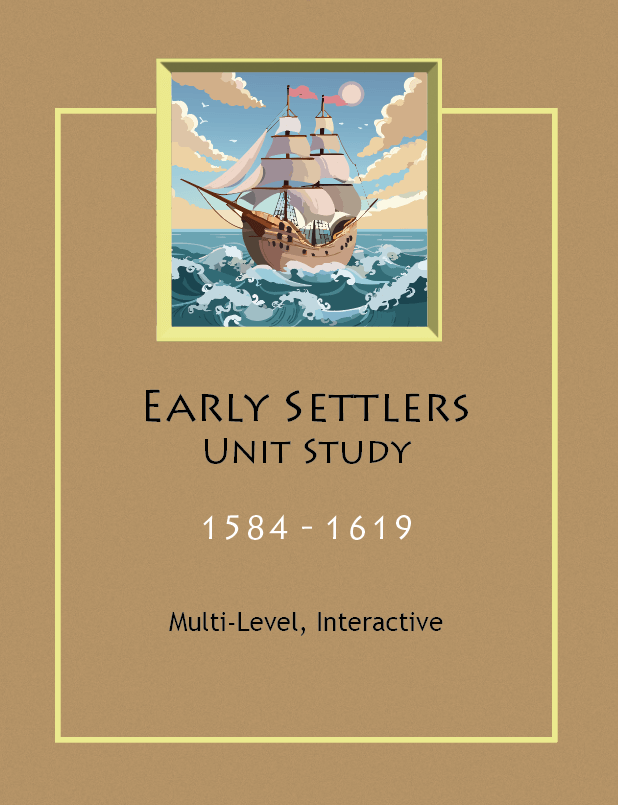
![]()
16.95 Soft Cover Manual
199 pages
Mailed to You
Early Settlers Pages
Check out our other pages for the Early Settlers Unit Study
Get the Lion To Guard Us Unit Study
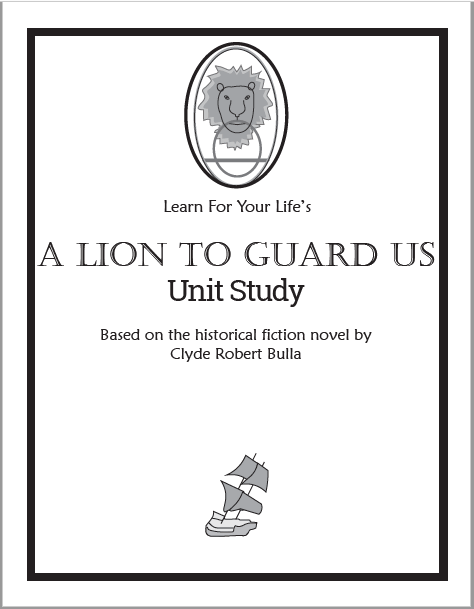
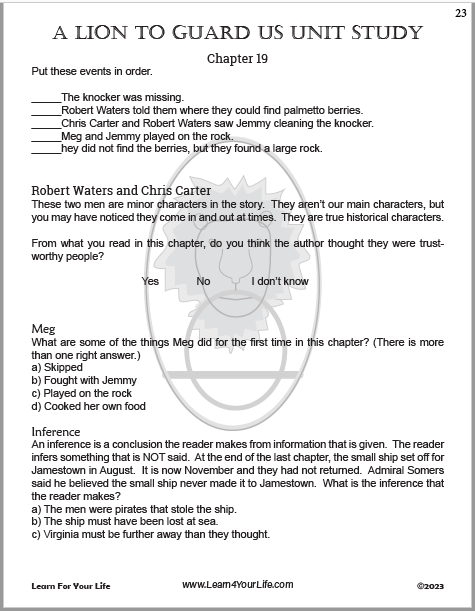
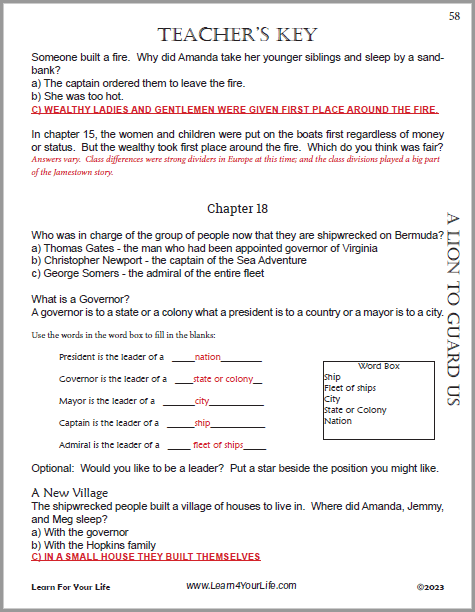
Student Guide AND Teacher's Answer Key Included
$2.99 Download - 78 pages
![]()
Our pages for A Lion To Guard Us
Clyde Bulla's Historical Fiction of Jamestown & the Sea Venture

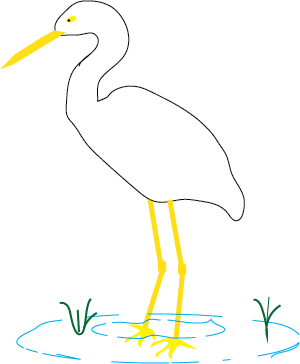
About Our Site
Hands-On Learning


